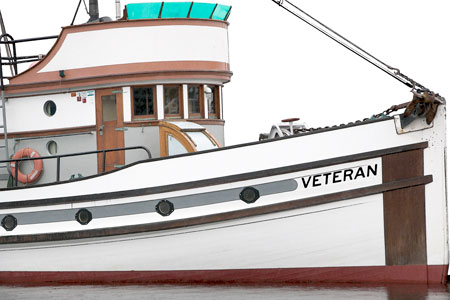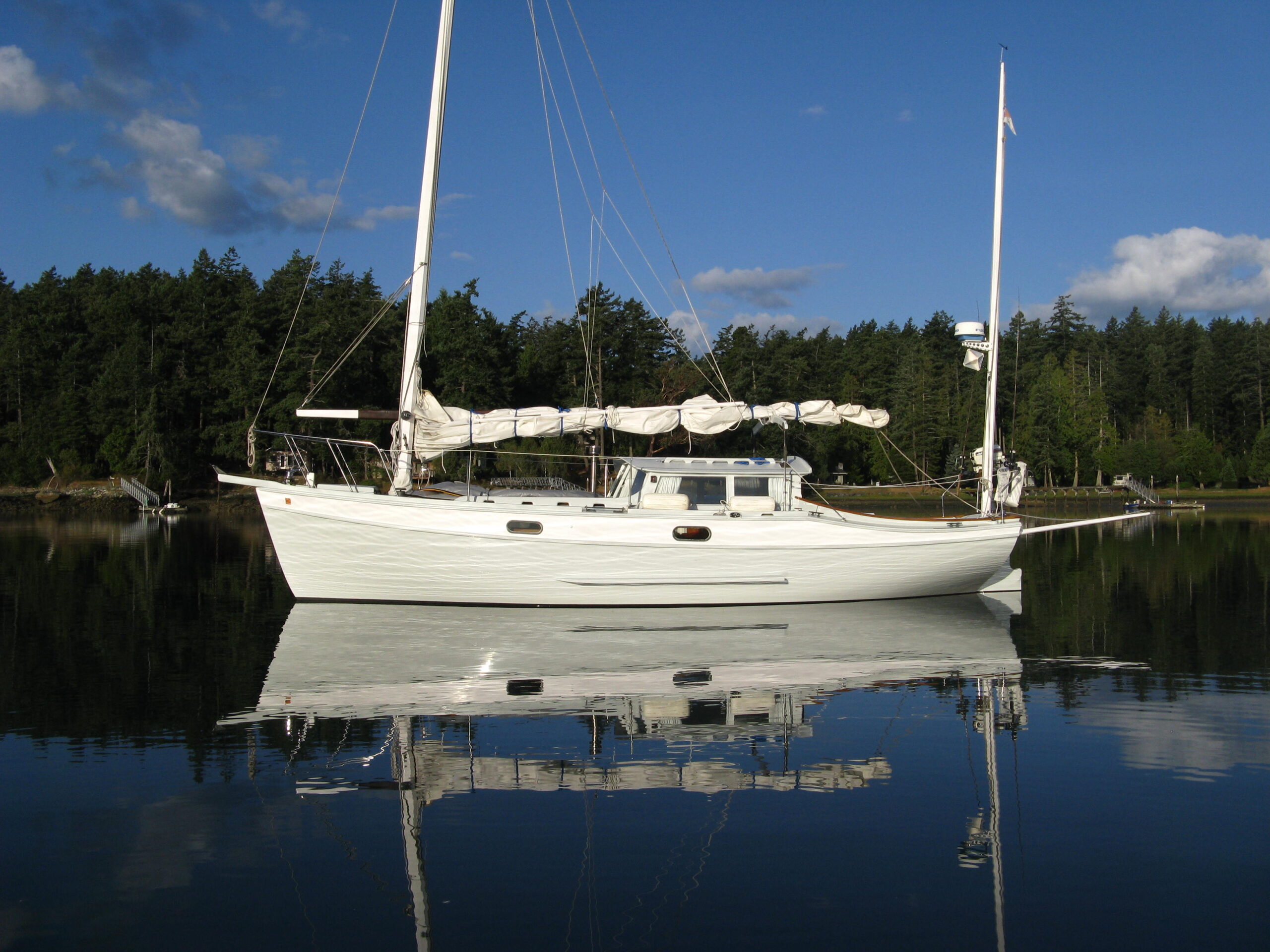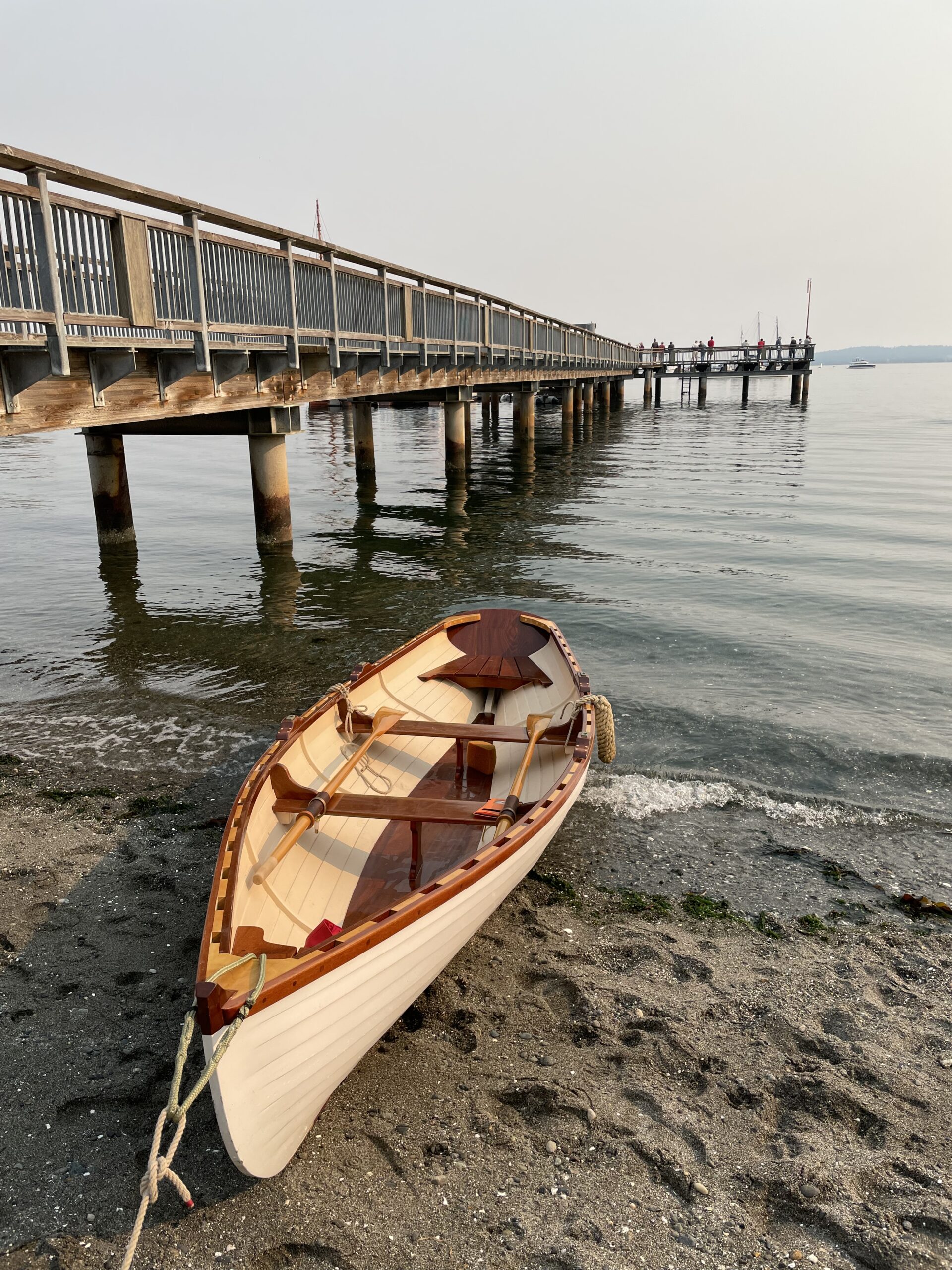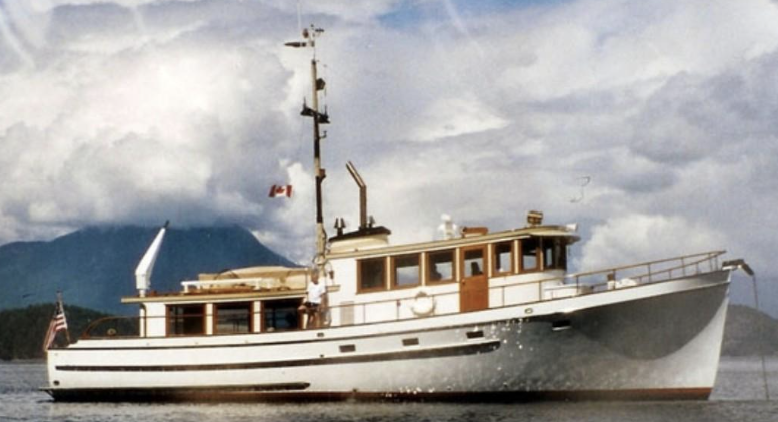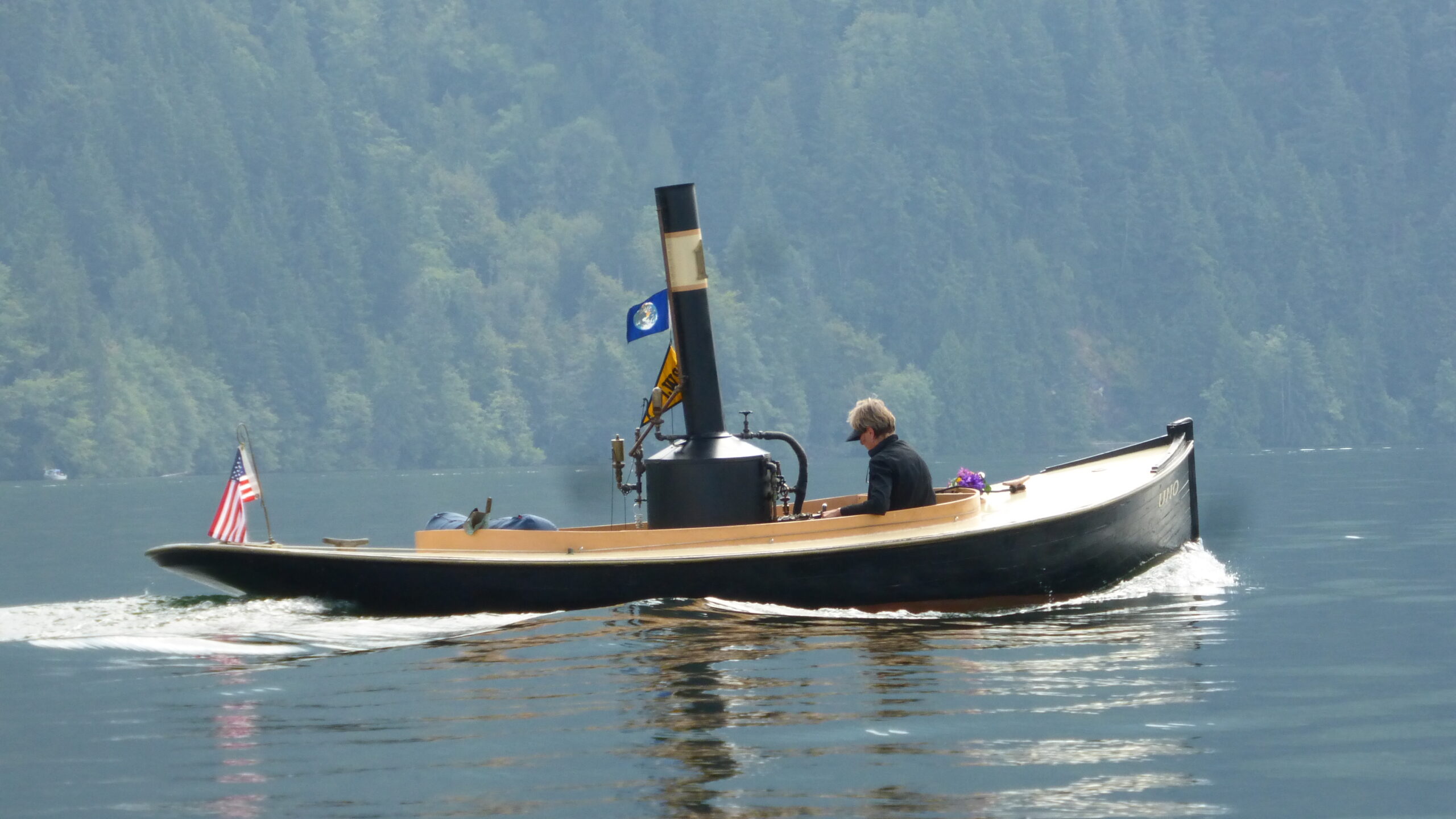
Aquila was found on the hard, as a derelict, on Lopez Island, WA, in 2011. Rebuilding her became our complete focus for two and a half years. Rebuild an old wood boat knowing little about it? We rebuilt Aquila in the best way possible considering that we had no money.
We scrounged high-quality logs of old-growth Fir, Yellow Cedar, and Black Locust from logging roads and beaches, and milled them with a band-saw mill to custom dimensions.
All the frames had broken at the turn of the bilge. We discovered ‘Laminate Frame Replacement’ in WoodenBoat magazine. In the article, the area a foot or so above and below where the crack was, is ground down forming a curved concavity. Locust laminates, slathered in epoxy, are pressed into this concavity using jacks and chocks braced against the opposite side of the hull. The resulting glue joint is a sort-off arched 9:1 scarf joint. We found the downed and seasoned black locust and used a band-saw mill to rip the locust into 1/8-inch laminates. Built a new coach roof out of old-growth red and yellow cedar all from the beach.
Whole planks and parts of some planks were replaced and others were splined along longitudinal checks using yellow cedar. Bronze screws and bolts for re-fastening were obtained by burning other derelict boats. Bronze fasteners were supplemented with hand-carved yellow cedar trunnels.
My Dad got a firewood permit to get wood from the logging road behind our house. We got those cords of wood in log form by giving the logging crew a cooler full of beer and a bottle of nice whisky. They pulled out old growth fir logs that had been remnants of logging in the 30s. The fir became a new toe rail, mast block, and a variety of interior wood. The only wood that we bought was the plywood bulkheads and the 1/4 in plywood that we glued over our old teak deck and then fiberglassed.
Years before we had gotten an Olsen 36-ft Yawl for free. She too was derelict. The Olsen was cut apart and all the usable parts then became parts for Aquila. Instead of replacing the floor timbers, we added floor timber sisters made of plate steel welded together and galvanized. They bolted through the floor timbers, the new frames and each bracket had two holes that got new keel bolts in addition to the originals. The new keel bolts, 8 total, got drilled and tapped four inches into the cast iron ballast.
A family friend lent us his corking tools and showed us how to reef out the old stuff and how to pack it back in, He was the first shipwright to see what we had done. Mike said we gave the boat sisters, mothers, fathers, and lovers to the framing.
Many of the planking seams splines of yellow cedar were glued in to create an ideal wedge-shaped seam. Hatches back on fresh paint Aquila was alive again. Despite what all of our Dads and everyone else’s too, recommended that we pay for the travel lift to launch our boat. Instead, we paid the port of Bellingham seven bucks to use their boat ramp.
Aquila weighs 10 tons. So launching it on a boat ramp with 60 ft of chain in between the truck and trailer seemed right up our alley. the launch went as expected, giant party, the boat floated, and 20 bucks to use the port crane to put the mast on. And we were sailing!
Since then she has been in the water for ten years, doesn’t leak, and sails like a Cadillac. We’ve been up the Straight of Georgia, through the Gulf Islands, to Tofino, and around the San Juan’s many times. Aquila is moored out in Friday Harbor, waiting to go sailing.

